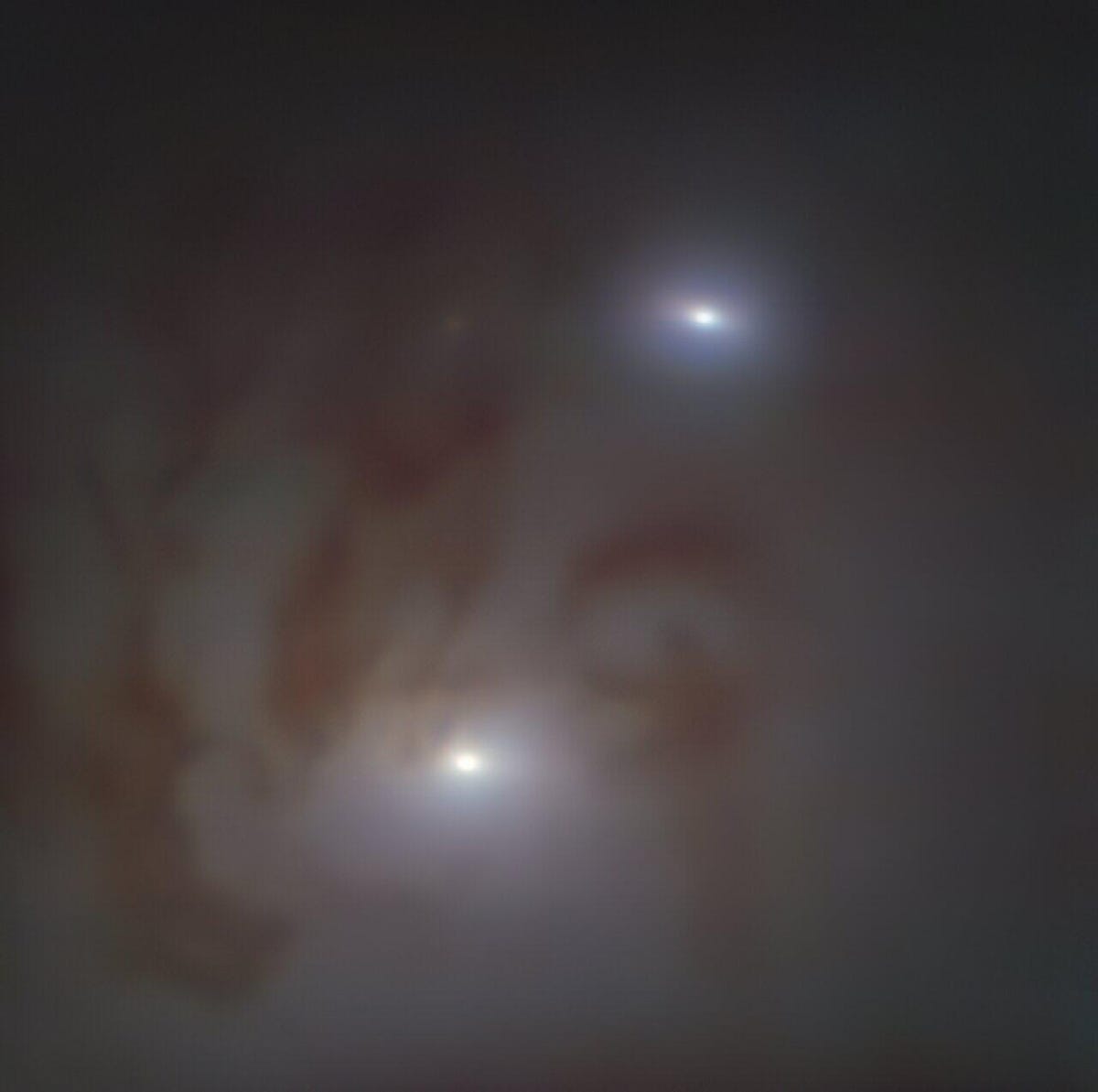
As you read this, our home, the Milky Way galaxy, and its cosmic neighbor, Andromeda, are traveling along a collision course. Billions of years from now, they'll smash together and amalgamate into a single galactic realm. Their stars will live side-by-side; planets will dangle across the street from one another; moons will make lunar friendships.
And even though we won't be around to see the spectacular show, on Tuesday, scientists working with the European Southern Observatory's Very Large Telescope presented an image that paints a fascinating picture of what that future impact may look like.
This portrait is of a galaxy named NGC 7727.
NGC 7727 has been imaged and studied in the past, but according to ESO researchers, this is the first time we've seen the phenomena in such intricate detail.
The celestial landscape lies about 89 million light-years away from us, appears as a wispy vortex of stardust from Earth's vantage point, and most importantly, is the result of two separate galaxies merging into one -- just like we think the Milky Way is destined to fuse with Andromeda.
Plus, because the galaxies that merged to form NGC 7727 were once anchored by their own supermassive black holes, a couple of deafening voids teamed up to lurk near NGC 7727's center. According to ESO, these gravitational marvels are the closest pair of supermassive black holes ever found -- and they're fated to coalesce into an even more massive black hole in the future.
Though it sounds pretty violent for two galaxies to collide, ESO researchers said in a news release that "individual stars don't generally collide since, compared to their sizes, the distances between them are very large. Rather, the galaxies dance around each other, with gravity creating tidal forces that dramatically change the look of the two dance partners."
In the image above of NGC 7727, in fact, you can see the so-called tails of stars, gas and dust being spun around. These tails are the result of both galaxies sort of orbiting around each other as they inched closer and closer until they turned into the asymmetrical conglomerate galaxy we now see at the center of the image.
"We see the tangled trails created as the two galaxies merged, stripping stars and dust from each other to create the spectacular long arms embracing NGC 7727. Parts of these arms are dotted with stars, which appear as bright blue-purplish spots in this image," ESO said.
With regard to the double black hole situation of NGC 7727, if you glance at the very center of the image, you can see two very bright points. Each point represents one black hole, and a close-up of this encounter can be seen in the image below.

Close-up view of supermassive black holes in NGC 7727.
ESOThey're just 1,600 light-years apart, which is incredibly close on a cosmic scale, and they're expected to crash in some 250 million years, very soon from a cosmic perspective.
When that eventually happens, the collision will vibrate ripples across the fabric of space and time -- as Albert Einstein's general relativity theory might put it -- and generate a gravitational force so strong it'll be simply incomprehensible to the human mind.
Perhaps a similar story will be told when the Milky Way melds with Andromeda. We know our home galaxy holds a black hole of its own, called Sagittarius A, and Andromeda is thought to have an intermediate-size void, too.









 Add Category
Add Category